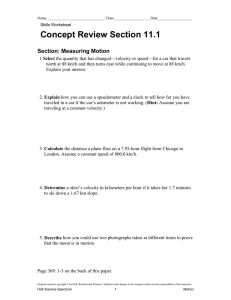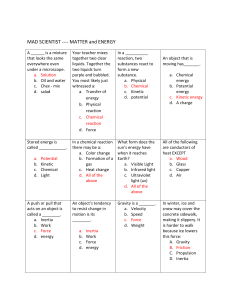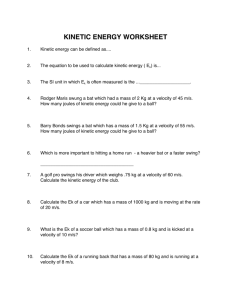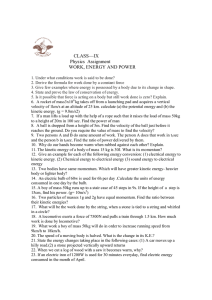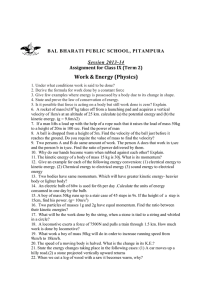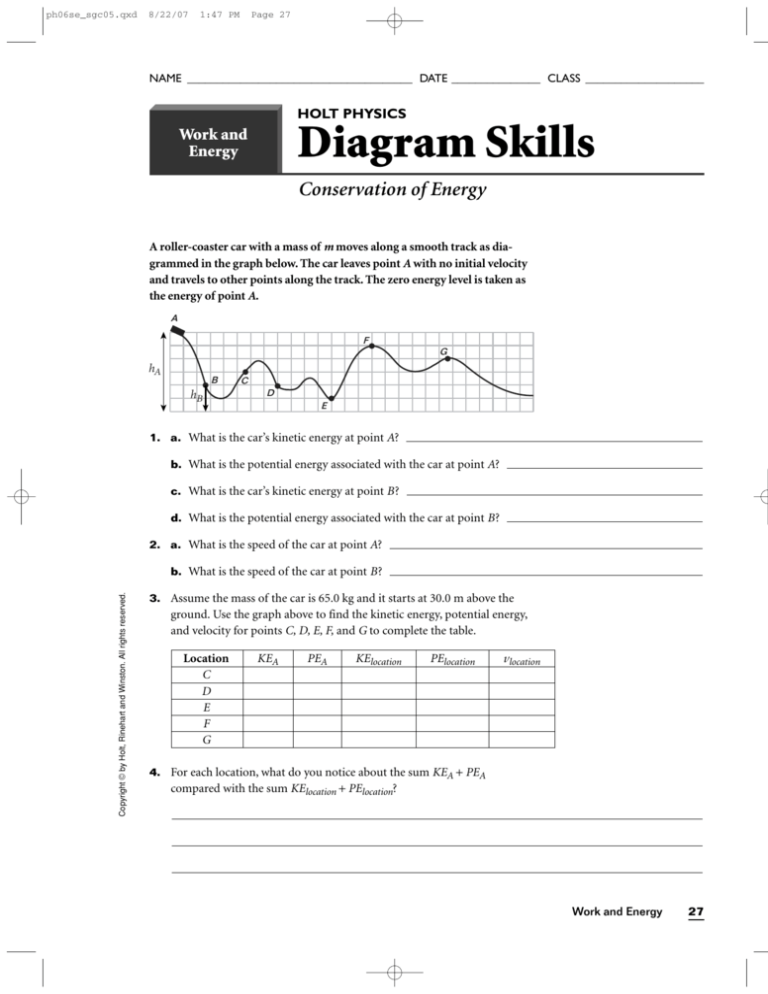
ph06se_sgc05.qxd
8/22/07
1:47 PM
Page 27
NAME ______________________________________ DATE _______________ CLASS ____________________
HOLT PHYSICS
Diagram Skills
Work and
Energy
Conservation of Energy
A roller-coaster car with a mass of m moves along a smooth track as diagrammed in the graph below. The car leaves point A with no initial velocity
and travels to other points along the track. The zero energy level is taken as
the energy of point A.
A
F
G
hA
B
hB
C
D
E
1. a. What is the car’s kinetic energy at point A?
b. What is the potential energy associated with the car at point A?
c. What is the car’s kinetic energy at point B?
d. What is the potential energy associated with the car at point B?
2. a. What is the speed of the car at point A?
Copyright © by Holt, Rinehart and Winston. All rights reserved.
b. What is the speed of the car at point B?
3. Assume the mass of the car is 65.0 kg and it starts at 30.0 m above the
ground. Use the graph above to find the kinetic energy, potential energy,
and velocity for points C, D, E, F, and G to complete the table.
Location
C
D
E
F
G
KEA
PEA
KElocation
PElocation
vlocation
4. For each location, what do you notice about the sum KEA + PEA
compared with the sum KElocation + PElocation?
Work and Energy
27

